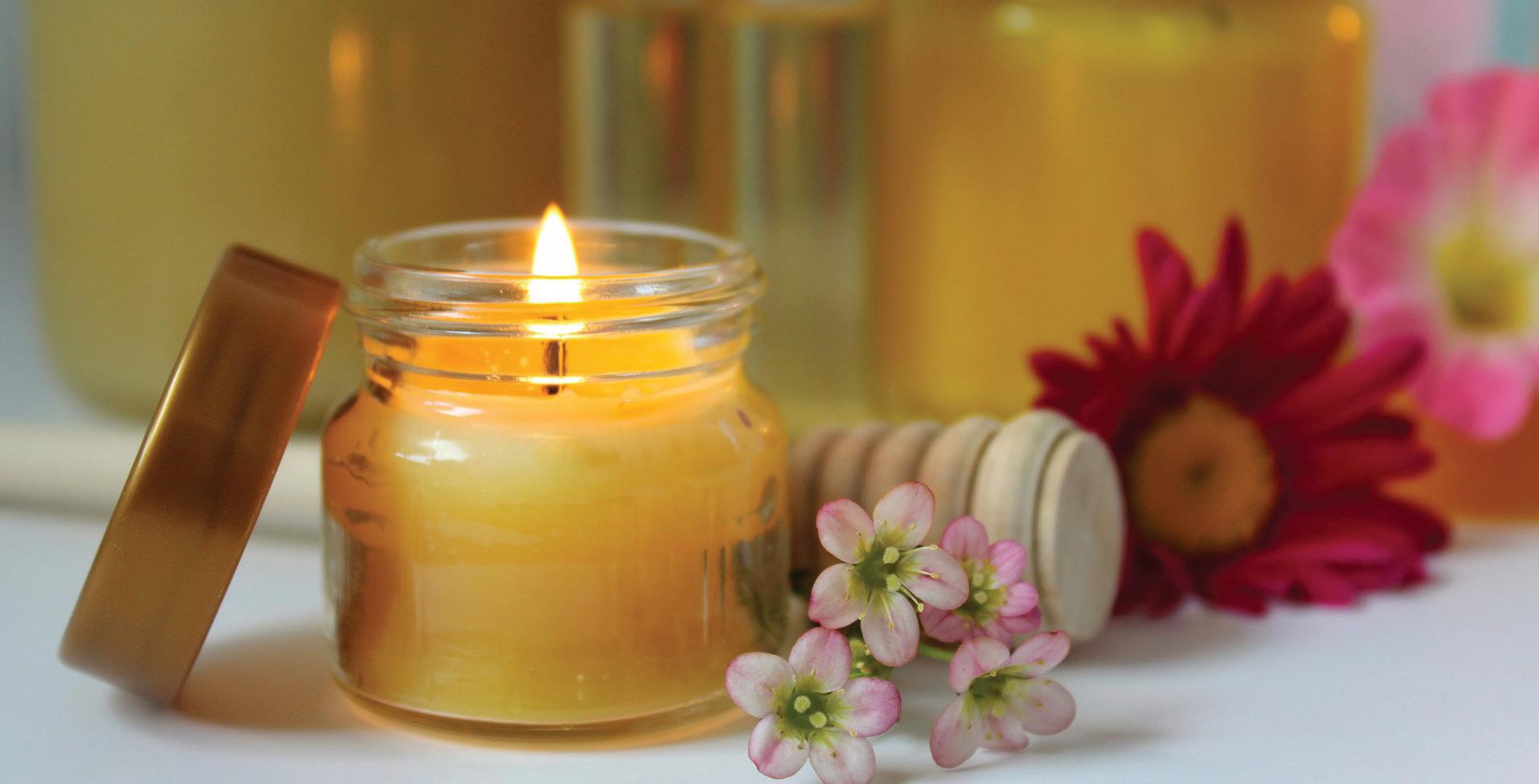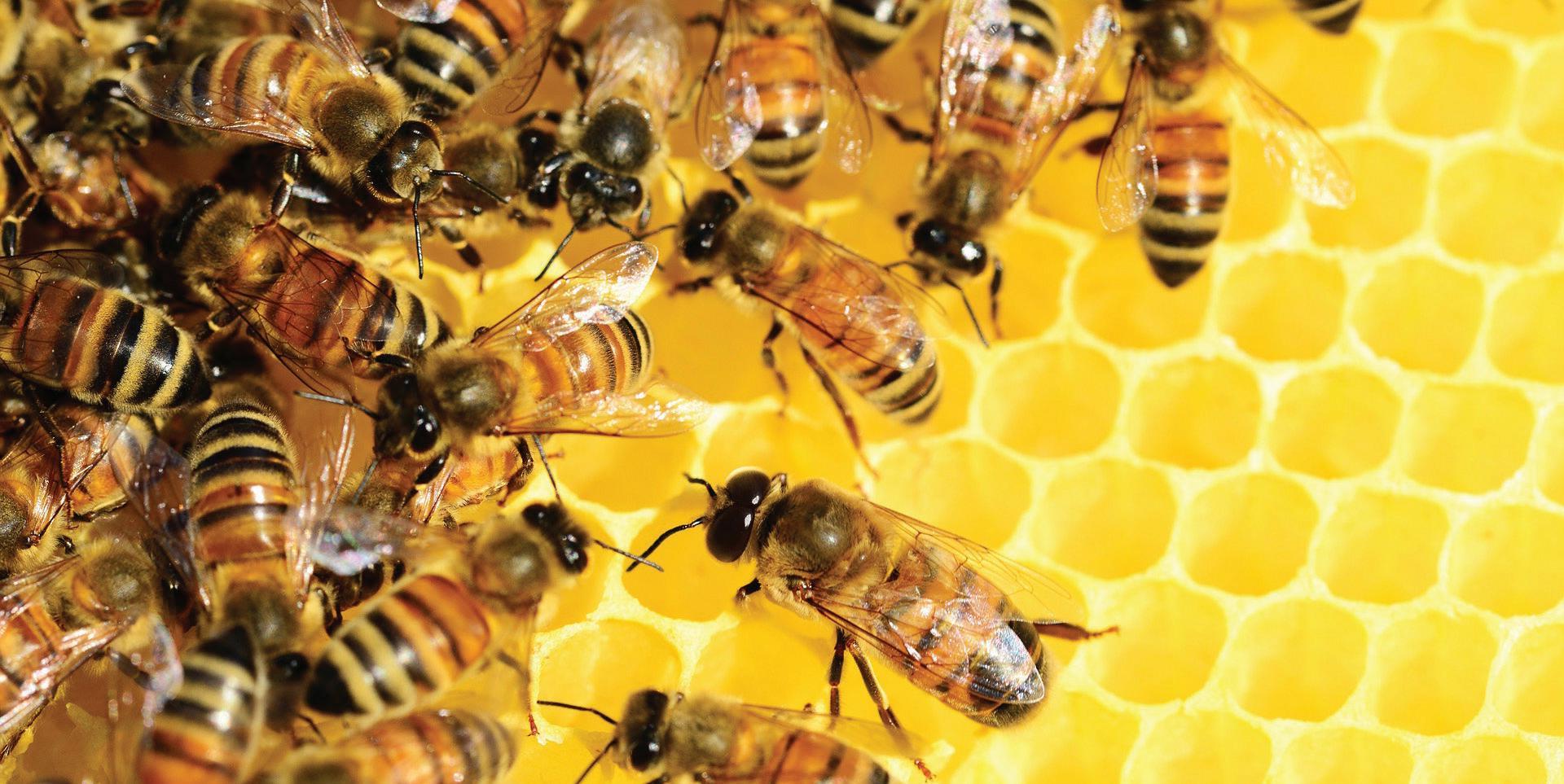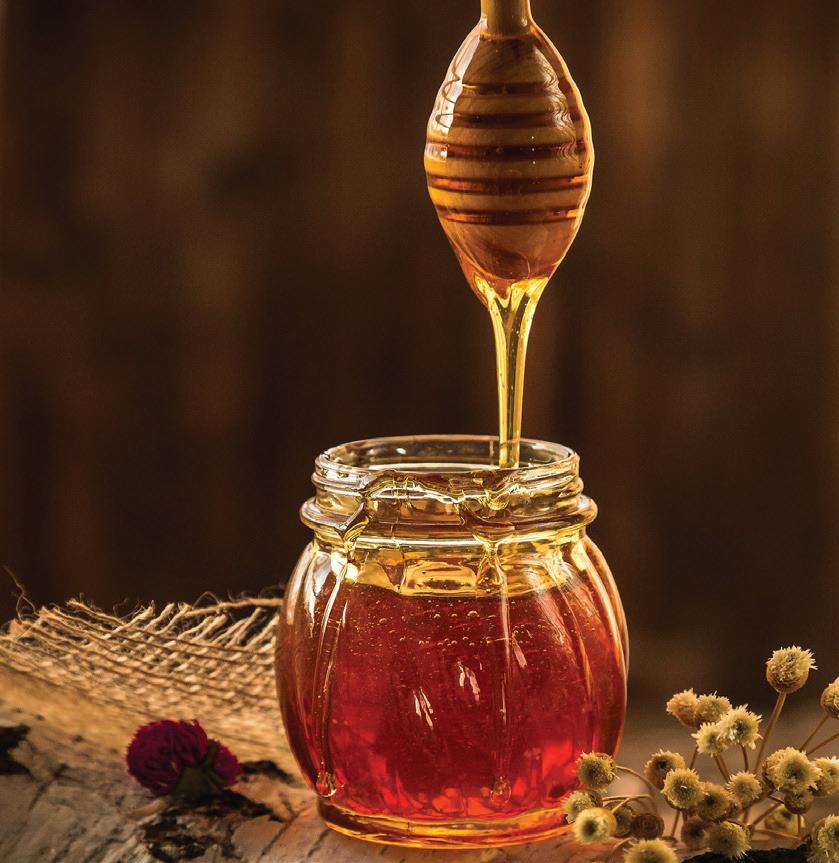
4 minute read
Reflections
Bee-autiful
By Jane Offer
Over the years, I have met several research scientists who, during conversations, told me how their projects are managed: who contracts them, why and what involvement those companies had to do with the outcomes. They each said the same, that the purchaser of their services sets the desired result and the researchers are required to keep working until that is achieved. Once this has been satisfactorily fulfilled, the companies then market it to the public.
In the case of genetically modified grain, testing was done on chickens, where there is an expected 5 percent death rate. In every GM trial, 100 percent die-off occurred and the testing was halted, so it could not be included in the results. This explains a lot regarding products such as DDT, which won the Nobel Prize for Science for its success in killing insects. It was later banned when it was proved that it killed people. The research scientists I spoke to all explained that testing it for human safety would not have been a remit and therefore, testing on humans would not have been carried out. In short, it carried unknown and unexpected long-term effect.
This has been the case with other products, Thalidomide and Roundup being two examples. The former had devastating effects and it took several years before the link to foetal damage was accepted. The latter, designed to kill unwanted plants in the crops, has been shown to have disastrous effects on both creatures and land, with Glyphosate contaminating the soil and natural water. Read the
Environmental Impacts of Glysphosate.
One of the most worrying aspects of using Glyphosate is the death of billions of bees world-wide. We need bees as they are responsible for much of the food on our plate. Bees perform pollination, a task that is vital to the survival of agriculture. In fact, one third of our global food supply is pollinated by bees, which keeps plants and crops alive.
It is important to remember that bees are domesticated not tamed, so we must support these creatures as they support us; by providing them with a clean environment.
Here are some fun facts about bees:
One bee produces a quarter of a teaspoon of honey
over its lifetime. To produce a kilogram of honey bees fly the equivalent of three times around the world. And, incidentally, all worker bees are female!
Aerodynamically a bumble bee is not designed to fly, a design fault in fact! It has a fat body and small wings. The problem is, no-one ever told the bee, so it just flies!
There is a belief that if a bee stings you, it will die. This is not necessarily the case. A bee has the ability to draw out its sting safely, however our natural instinct is to brush the bee away when it stings, which drags its insides out of its body. The worker bees use a movement called the Waggle Dance to communicate. Rapidly shaking her body from side to side in certain directions indicates the location of food sources. The duration of the Dance signifies the distance from the hive and the quality of the pollen. Pretty amazing isn’t it!
The worker bees look after the Queen and feed her Royal Jelly. Scientists have found 5 percent of it is unidentifiable; there is nothing similar on the planet.
In Europe, bumble bees have a history of connection to spiritual practices. To the Druids, the bee symbolised the sun, the Goddess, celebration and community. They drank Mead containing fermented honey at their festivals and monks still produce it today.
Australian aboriginal stories also tell their connection through Jabreen the Warrior! Read more about Jabreen or Javreen - The Dreaming story of Jabreen the Warrior or watch the video: Kombumerri
Traditional Custodian Contributor: Unvle Graham Dillon OAM
As a power animal, the bee symbolises a strong work ethic, a willingness to live and serve in peaceful community with others. The bee embodies focus and hard work, and balance, allowing us time to smell the flowers.
Honey making is the bee’s purpose. It is an amazing support to human health, full of antioxidants, a good sweetener, and it can be used to heal burns and wounds.
When you feel under the weather make some honey, lemon and ginger tea from a slice of fresh lemon, a piece of fresh ginger and a spoonful of honey, all steeped in hot water. Very warming and comforting.
Thank you, bees!


Jane Offer runs the Purple Dragonfly holistic shop in Warrandyte Victoria as well as The Oaktree Organisation Australia, a not for profit business for training and wellness.
Image Credit: Pixabay










